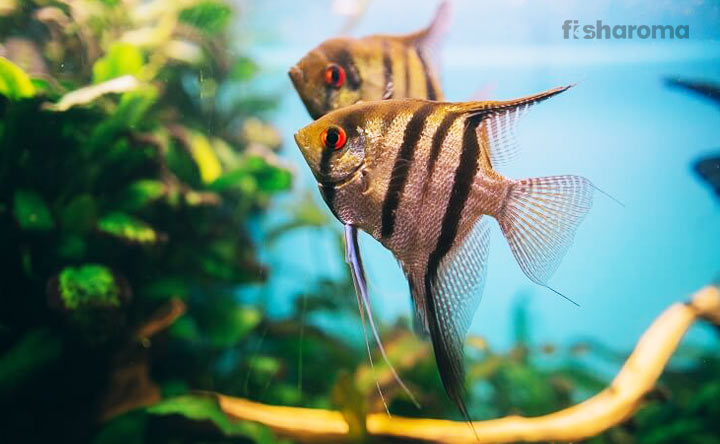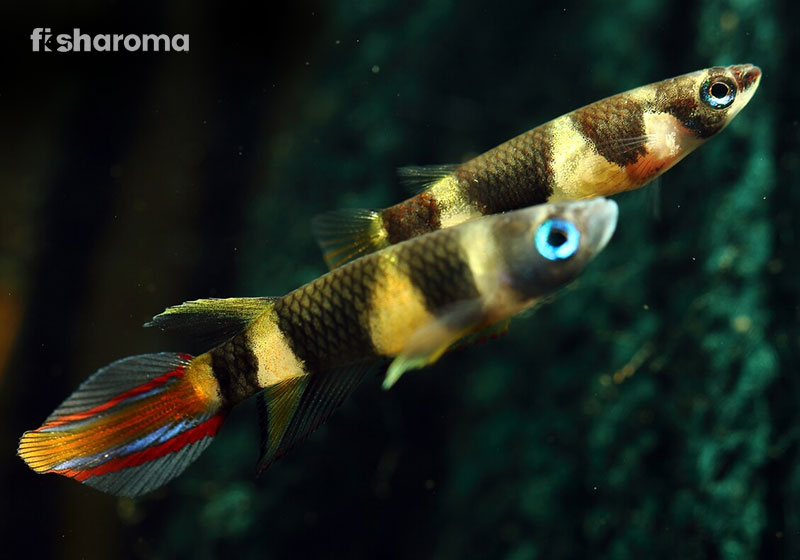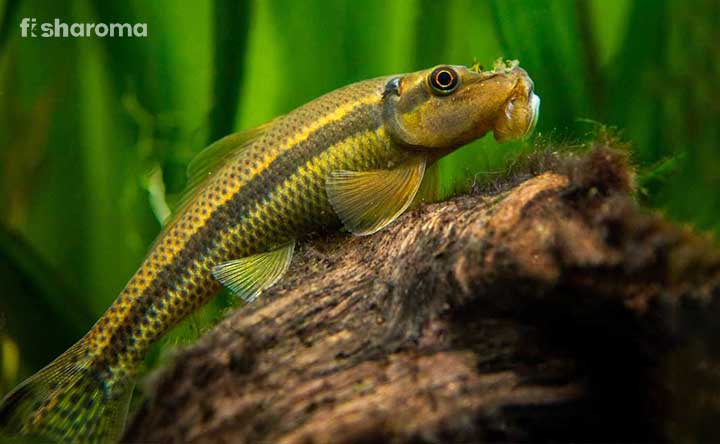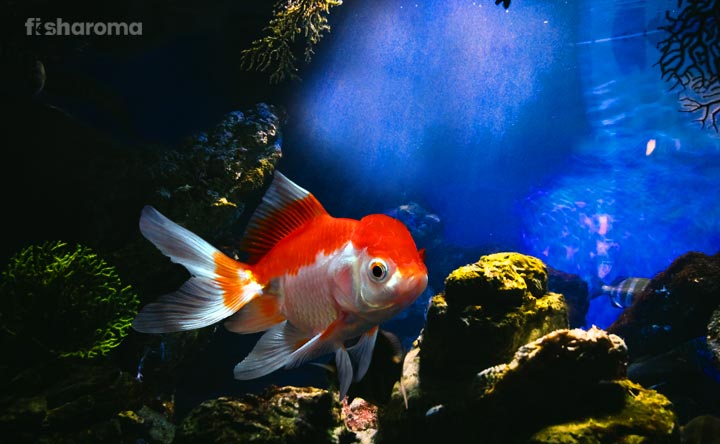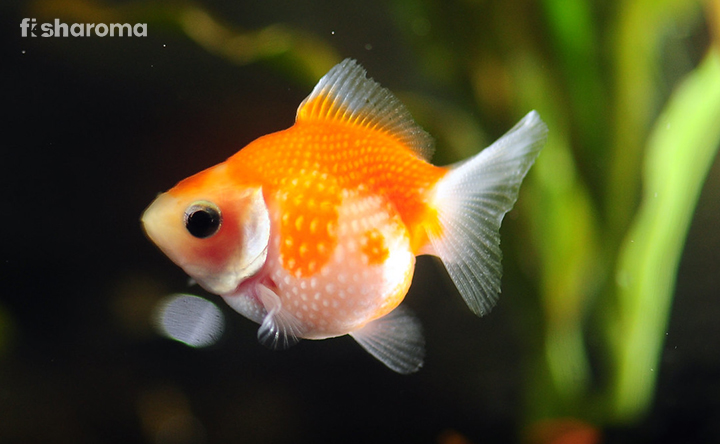Black Phantom Tetra: Know How to Take Care of Your Black Beauties
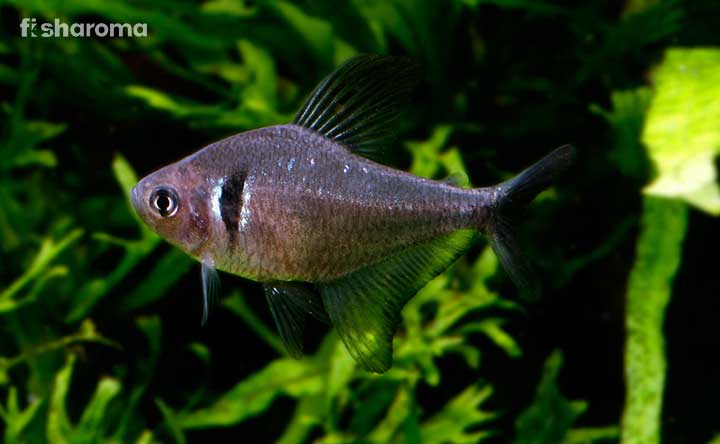
- Origin and Habitat of Black Phantom Tetra
- Appearance of Black Phantom Tetra
- Behaviour of Black Phantom Tetra
- Lifespan of Black Phantom Tetra
- Diet of Black Phantom Tetra
- Tank Requirements of Black Phantom Tetra
- Water Type of Black Phantom Tetra
- Compatibility of Black Phantom Tetra
- Breeding of Black Phantom Tetra
- Diseases of Black Phantom Tetra
- Summary
Black Phantom Tetra, the South American fish species, is a sought after pet choice, because of its distinguishing appearance and easy-to-care attributes. Their peaceful temperament makes them a wonderful selection for a community fish tank. Just like any other Tetra fishes, they also belong to the groups of freshwater fish.
So, if you wish to own them, get ready to know their daily feeding requirements, their temperament, breeding information, and everything else concerned.
Key Specifications of Black Phantom Tetra
Going through the following information will provide a fair idea regarding necessary care guidelines for a Black Phantom Tetra.
| Scientific Name | Hyphessobrycon megalopterus |
| Origin | Western Brazil, Bolivia, Paraguay, around the upper Madeira zone or basin |
| Lifespan | 3-5 years |
| Colours | Male: Pale grey body Female: Dark greyish body with red-hued fins |
| Temperament | Timid |
| Size | 1.4-1.77 inches ( 1.75-4.5 cm) |
| Diet | Omnivore |
| Family | Characidae |
| Compatibility | Social |
| Care Level | Easy |
| Reproduction | Egg-layers |
| Maintenance Requirements | Moderate |
| Tank Size | Min 20 gallons |
Overview
These active fishes are known for their striking dark colouration, coupled with their active and jovial nature. They are extremely agile and will keep the onlookers engaged with their activities all the time. Black Phantom Tetras love socialization, so keeping them in a community tank is never a problem. Mostly these fishes are well-behaved with other species, but as a basic thumb rule, housing them with similar fish species is the right way.
Origin and Habitat of Black Phantom Tetra
These subtropical fishes are generally found in the river embracing the border zone of Brazil and Bolivia. To be precise, they are all around the Río Mamore, and Río Beni, and Río Guaporé (Río means river) basins. They are also frequent in the upper part of the Río Paraguay.
Owing to the geographical location, the water bodies in which the fishes live are mainly slow-moving. Due to the typical rainforest environment, they find their habitat with lots of vegetation all around.
So, whenever you are arranging for their aquarium at your house, essentially provide a similar atmosphere for their proper growth and convenience. After all, everybody stays well in their natural habitat.
Appearance of Black Phantom Tetra
Let’s start with a fun fact, the Black Phantom Tetra is not black. You read that right! Their oval-shaped or Tetra-shaped body is typically flat. They exhibit a total of four unpaired fins like dorsal, wide anal, little adipose, and caudal, along with a fantastic forked tail. This unusual fin pattern contributes to their name “Phantom”. They have the iconic mark just behind their gills, resembling the shape of an actual human eye. The mark has some blue and silvery iridescent tints to it.
Size
They are not big, rather can be grouped under the small fish category. They are generally sized between 1.4 to 1.7 inches. During the breeding season, specifically at the time of spawning, female Black Phantom Tetras look bigger than the males in appearance. Male fishes possess longer and bigger fins than female ones.
Colour
The dimorphic species is known for its robust colouration. The greyish shade is more prominent in female fishes while males are a little paler. While the iconic “eye” mark is on both sides of their bodies, male fishes have prominent markings than females. The long fins of males are more blackish than female Tetras.
On the other hand, female fishes’ pelvic fins, along with the anal, caudal, and adipose fins are adorned with a subtle red shade that makes them different from the males. Due to this colouration, they are often mistaken for other Tetra species with a similar appearance. Females also have darker dorsal fins than males.
Some breeders have bred Black Phantom Tetras with extra long fins, though that is not a common thing to come across.
Behaviour of Black Phantom Tetra
The shoaling fish loves to socialize and stay in groups. You will not see them swimming alone ever. Their usual temperament is calm and they love to play along with themselves. Their frequent jumping nature could get them into trouble, but Black Phantom Tetras seem not to be bothered by that at all.
You can notice a certain social order in their groups. Male fishes can become territorial and that might lead to a fight between the males only. The fight is, however, not serious, and can be considered as one of their playful attributes. When it comes to claiming territories, they often extend their anal and dorsal fins, giving an elongated and bigger look, trying to intimidate the other male Black Phantom Tetras. Their body colour also becomes quite dark due to their bodily muscle-flexing, while they are engaged in territorial fights. So, that is a clincher for the aquarium owner to determine if a fight is going to occur.
But rarely, concerned males who have locked horns with each other might injure each other’s fins to some extent. If there is a frequent pattern to their fights, kindly arrange separate places for the male Black Phantom Tetras.
During the breeding season, males are quite arrogant and a little hostile, especially when females are around them.
Lifespan of Black Phantom Tetra
The bubbly fish has a standard lifespan of around 5 years. But it can always be as minimum as 3 years and if you are really taking care of your pet, it can live for 6 years as well. Quite naturally, your attention and vigilance towards the safe keeping of your fish will reflect on its health. If their fights become serious and repetitive, then the two engaged males might feel stressed that often shorten their general lifespan.
Diet of Black Phantom Tetra
The Tetras love their meals and they will never show any signs of being overfed. Almost everything is okay for them, but to ensure their proper nourishment, give a balanced portion of meals every day. As their natural dietary needs only include live food like small crustaceans and other aquatic insects and worms, you should always go for such kinds of items as a treat, like mosquito larvae, brine shrimps, and other worms. Live foods are the best option, but their quality has to be of premium standard. Otherwise, frozen or pelleted foods along with flake foods are also okay for them. Pellets and other food supplements should not be regular in their diet, but they can be given several times a week.
Their hunger pangs and digestive system is such that they need meals multiple times a day, so be careful on the proportions to prevent overfeeding. Feed them thrice a day essentially.
Tank Requirements of Black Phantom Tetra
These Tetras are made for community tanks, owing to their sociable nature. They are comfortable staying in their own groups, as well as with other species. Since they usually stay with a small to the medium-sized group in the wild, let them stay with 5 to 8 members of their own species for their mental stimulation.
Since males are often prone to go for a territorial showdown, choose male and female fishes accordingly.
Tank Size
Avid swimmers by nature, these fishes need bigger aquariums both horizontally and vertically, ensuring their swimming and jumping needs. Starting with the minimum, the tank should at least contain 10-20 gallons of water, if not more. But, depending on the number of your fishes, the tank will be bigger accordingly. Ideally, lengthwise the tank should be at least 20 inches.
Tank Lid
Black Phantom Tetras are frequent jumpers that do not actually understand the consequences of jumping out of their tank. So, the lid should be tightly placed so that they don’t injure themselves while doing so. Also, the tank lid and the level of water should have considerable space between them to prevent such injuries. So that, even if they jump they don’t hurt their fin or body.
Substrate
Provide some sandy surface, similar to Tetras’ natural habitat. In the wild, they are accustomed to swimming through darker areas because of the subtropical rainforest. So, the substrate should be dark-shaded as well.
Filter
Black Phantom Tetras require well-filtered water so install a peat filter as it will fulfil the need. It needs to maintain a moderate water speed for the comfort of the fish.
Ornaments
You can decorate the aquarium with anything you want as long as they don’t create any space problems, or harm the pet fish in any way. Some driftwood at the bottom of the tank will satiate their need to play hide and seek.
Lighting
Black Phantom Tetras are not habituated with bright lights around them, because in their natural surroundings, they swim through thick vegetation. Direct sunlight does not enter their territory in a way. So, if you are arranging for lights, make sure those are either dim or low in power.
Presence of Flora
Black Phantom Tetras are fishes of the jungle, so plants are important. Aquatic plants, as many as possible, should be placed inside the tank. Of course, leaving some swimming zones for the fish.
Plants on the surface are extremely necessary at the same time, floating plants are also welcome. Rooted plants will offer shelter to them. Also, these plants help to soften the effects of lights, which is of utmost importance for their thriving. Black Phantom Tetras enjoy a well-decorated aquarium, so, make the tank interesting as you have plenty of options to play with. You can also spread some leaves on the surface of the tank so that they get the feeling of the natural habitat (rainforest) within the aquarium.
Cleaning Method
Despite the filtration, the tank should be cleaned in a proper way. Look for any leftover items, ruins of any decorations or anything that can possibly pollute the water. The leaves on the substrate should be changed and replaced with new ones after a few weeks.
Water Type of Black Phantom Tetra
Black Phantom Tetras are usually capable of withstanding a lot of changes, but we should always provide what is best for them. These mind-blowing fishes are show fishes, so if you want them to exhibit their colours and agility, you need to have a moderately transparent and cleaned tank. This way you can enjoy their activities at the same time they can enjoy their semi-dark environment. The water movement should be moderate, meaning not too fast, neither too slow, but something in the medium.
Temperature
These Tetras can endure a lot of changes regarding the water parameters, but they flourish well in temperatures ranging from 22.2 to 27.7 Degree Celsius. Temperatures should not ideally change drastically for about 2 Degree Celsius.
pH Level
The exact ideal pH is around 6.5 but you can flexibly keep it between 6.0 to 7.5. The water alkaline level should be checked periodically to make sure it’s not way too acidic for the fish.
Hardness Level
Water hardness is best when it is nearly 10 dGH, but then again, if not the exact level, try to keep it within 18 dGH.
Mineral Level
Although they do not have any specific requirement as such, just keep it in your mind that, never pour distilled water to your aquarium housing Black Phantom Tetras, as the mineral level is unsuitable for them.
Replacement Procedure
To maintain the water quality, at least 30% of tank water should be changed in alternative weeks. This is a routine process to keep the aquarium hygienic and its members healthy.
Compatibility of Black Phantom Tetra
The fun-loving species can easily get along with other species so they are perfect for keeping inside a community tank as well. Keep them together along with their own species members in groups.
Suitable Tank Mates
They are good with other social and peaceful fishes, but it is good to keep them with their own kind all the time. Still, if you are interested, try
- Danionins
- Gouramis
- Rasboras
- Red Phantom Tetras
The basic rule is to slowly release the other species into their aquarium. This will give them some time to adjust to their neighbours.
It is a common conception that these Tetras are fin nippers, but you can avoid letting that happen if you keep them in large groups instead of alone.
Unsuitable Tank Mates
Any aggressive or bigger fish that can easily devour these Tetras should be avoided at any cost. There is a catch with the Cichlids fishes, as some of them are aggressive and some are not. You have to know the temperament of the Cichlids to decide if you can manage them with Black Phantom Tetras or not. It is recommended that unless you are a pro fish enthusiast, don’t club them together in your aquarium.
Breeding of Black Phantom Tetra
The easy-to-breed species is a delight for breeders as they are the easiest ones to handle. Just some basic requirements like a specific pH level of 5.5 and water hardness of 4 dGH will do. Apart from these, they don’t need extra care or anything of that sort.
To boost up the spawning pair, live or high-quality frozen brine shrimps or mosquito larvae are simply the best. As a result of the spawning, female Black Phantom Tetra fishes can lay a maximum of 300 eggs altogether. You may always keep one male Tetra with multiple female Tetras to avoid their stress. The setup has to be with lots of plantation, and low light, much like their usual surroundings. The males always playfully chase the females and in the process of being chased, females lay eggs on the floor. The male Tetras begin to fertilize the eggs soon after.
Once the eggs are scattered, you should always move the parents to their usual place from the breeding tanks, otherwise, the eggs might be consumed by them. Either separate them through some mesh or other things, but keep the eggs out of the parents’ reach.
The eggs hatch after around 24 hours and initially, the newborns live on their egg sacs. The newborns, once they are hatched, are known as fry, can be given commercially available foods, exclusively made for them or infusoria. After around 3 days, the fry can start to swim locally and then after a few more days, like around 10 days, they will swim independently. If you can, then lower the lights even more for the fry.
They will attain maturity in terms of appearance after 3 weeks.
Diseases of Black Phantom Tetra
These small Tetras are otherwise healthy and they rarely fall sick. The usual ones like ich, fish flukes or parasitic or bacterial infections often disturb them, but all these things are easily avoidable with proper cleaning, timely water change, and a balanced dietary routine.
To keep the water ammonia low, make sure to change 25% of the water biweekly.
Summary
The Black Phantom Tetras have a good tolerance level regarding everything. Neither fussy nor bossy, these are excellently beautiful with their dark colouration and unique mark. They are quite hardy, but their undeniable and irresistible appearance plays a peek-a-boo through the aquarium plants and low lights create a mystical aura for them. If they are swimming with Red Phantom Tetras then it will be a sight to behold.
Some Similar Care Guides
If our article has captured your eyes, then you might as well be interested in similar pet species as well.
- Dwarf Gourami – The small and orangish pet fish is sure to enhance your aquarium beauty without any doubt. They come in many variations such as Honey Dwarf Gourami, Blue Dwarf Gourami, and so on.
- Chili Rasbora – Keeping these tiny fishes are hassle-free and they are pretty friendly as well. The cute red color of their body is eye-catching to say the least.
- Sparkling Gourami – True to their name, this is also a small species, exhibiting different hues like blue, orange, and green. The apparently peaceful creatures make your aquarium even more beautiful with their presence.

